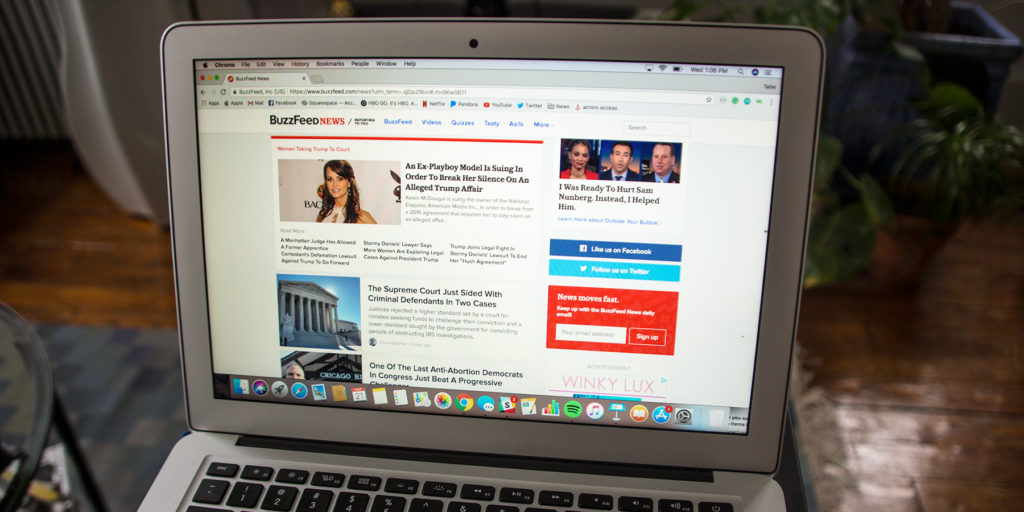Don’t call it a new thing — long-form journalism at BuzzFeed. It’s been happening for a while.
That’s a message that Steve Kandell, recently hired long-form editor at Buzzfeed, wants readers (and writers) to know — that BuzzFeed is not actually a stranger to the 2,000+ word story.
Though perhaps the 6-year-old site is more commonly thought of in terms of top lists and cute-animal content, more and more long-form journalism and storytelling is on the way at BuzzFeed, Kandell says.
And that’s to add to what’s already there.
“This doesn’t seem like really that big of a leap,” says Kandell. “Doree [Shafrir] did this story on night terrors a few months ago that was 4,000 words long. It had original artwork commissioned, a lot of original reporting. This isn’t stuff that’s happening like it’s turning on a dime. It’s been happening pretty gradually and organically, here. I’m just here to help put out more of it.”
Kandell spoke with The Freelance Strategist about what long-form will mean at BuzzFeed, and about what BuzzFeed wants. For freelancers, his words are a window on a creative process — one that’s still evolving and bound to in some way transform BuzzFeed, as a brand — and they’re a lens onto how to pitch, at BuzzFeed and other outlets.
Boxing the BuzzFeed long-form
What does a freelancer need to bring to the table to get involved with BuzzFeed’s long-form content? Mainly two things at the moment, Kandell says: patience and lot of ingenuity.
Patience, because Kandell has just started at his new desk. BuzzFeed announced his appointment Nov. 5.
Ingenuity, because as the previous editor-in-chief of SPIN and an editor at Details, if he hasn’t seen it all, Kandell has seen an awful lot of it. He wants something particular, something fresh, for BuzzFeed. He’s working on exactly what that is.
“We’re trying to the find long, in-depth, exhaustive equivalent of the kind of quick-hit thing that the site does, in terms of people wanting to share,” he says.
Kandell isn’t saying that he wants even longer lists of, say, realistic animatronic puppets. Rather, he’s talking about an X-factor that those type of articles possess — the “share-this” imperative. When it comes to BuzzFeed and long-form, the subject matter may change, but the packed-in prompt to share, that’s got to remain intact.
“Sometimes it has to do with the writing itself,” says Kandell. “Sometimes it has to do with a particular subject matter that’s never been covered in a certain way. Sometimes it’s just a particular character.”
If he sounds a bit vague, Kandell says he knows it. Early on, he’s working out what he doesn’t want, as much as (if not more than) what would make the perfect pitch.
“I come from a music magazine,” he says. “So a lot of these first pitches are profiles.”
Understandable, perhaps, given his background at SPIN, but not necessarily the formula for BuzzFeed: “I mean it could be, if it was the right combination of person and access,” he says. “If it’s a 15-minute phoner with someone who’s a well-known person, I don’t know if that’s interesting unless I understand what you are going to do with that 15 minutes — something that anyone else couldn’t do.”
What he means is this: If a writer wants to pitch a a profile, it’s their job to make BuzzFeed’s readers care about the person or the subject, even if they think they don’t at the article’s start. Kandell is looking for a piece so sure of its concept, so unusual and so well put together, that his audience will read and share it regardless of what it’s actually about. And he suggests that none of this is the reinventing of any wheel. It’s just a different spin on what’s always worked.
“It’s really just about that kind of really fiercely traditional magazine writing being done in an environment that’s all about: oh my god, you’ve got to read this . . . something fascinating and bigger than the subject.”
Pitching Kandell: How to do it, what to expect
“Pitch me,” Kandell says, when it comes to how freelancers can get into the mix at BuzzFeed, on his long-form beat. (The BuzzFeed contact page includes an e-mail address for editors.)
He says there are no secrets, no hoops to jump through — other than coming up with a great idea, executing it with aplomb, and coming at it from an angle that makes the words eminently addictive. Kandell says the mix at BuzzFeed will also rely on ideas from in-house staff — a well of resources that the new emphasis on longer format work will allow the site’s editors to tap.
“Everyone in here has things they’ve been pitched by their own writers, or things they’ve been working on themselves, a little bit to the side of the daily quick-post grind that these guys all have here,” he says. “So it’s this mix.”
How much of a mix? In one version of ideal, Kandell says, maybe a 50/50 staff-freelance ratio down the road. And for freelancers, he says, the work will pay commensurate with respectable long-form anywhere.
“It may depend on the project, the writer, what’s entailed,” Kandell says. He doesn’t have a specific word-rate in mind: “The hope is to pay better than online journalism is perhaps notorious for paying.”
